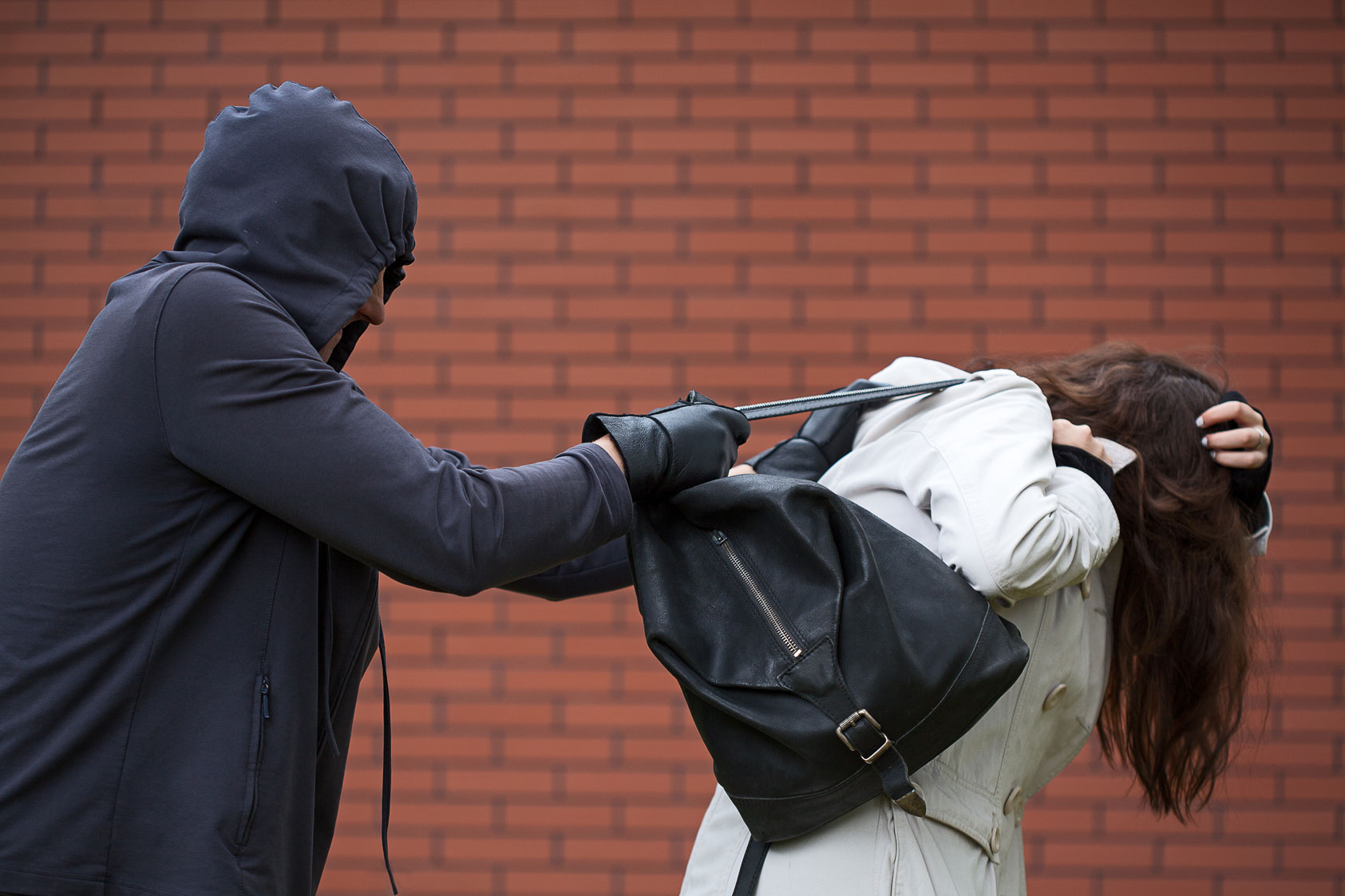If you or a loved one find yourselves in a difficult situation, we understand the urgency and stress that comes with it. At Angels Bail Bonds, we specialize in providing the support and assistance needed to secure bail for felony robbery charges.
Learn the basics about the bail process for a felony robbery charge, and then contact Angels Bail Bonds today. Let us be your trusted partner in navigating the bail process for felony robbery charges. We are here to help you regain your freedom and prepare for your legal journey.
What is bail?
Bail in California refers to the amount of money or property that a defendant or their surety (a person responsible for the defendant’s appearance in court) must deposit with the court to secure the defendant’s release from custody while awaiting trial.
The purpose of bail is to ensure that the defendant appears in court for all scheduled hearings and does not flee before the trial. A county bail schedule or table determines bail amounts, but a judge can deviate from the schedule based on various factors, including the severity of the offense, the defendant’s criminal history, and if the defendant is a risk to public safety. If the defendant fails to appear in court, the bail is forfeited, and a warrant may be issued for their arrest.
What are bail bonds?
When you find yourself in a situation where you can’t afford to pay for your bail, bail bonds might be the solution for you. A bail bondsman will charge you a fee in exchange for providing the payment. Bail bond companies in California charge only 10% of the total bail amount to post-bond for a defendant. So, if the cost of bail is $20,000, the bondsman will charge $2,000 instead of the full amount. While this may still seem like a lot of money, it’s much more affordable than paying the entire bail amount, especially on extremely high bail amounts for some serious felonies.
Those rates can be as high as 20% for some immigration and federal charges because these rates are set by law, and all bail companies must charge the same amount. Despite the costs, using a bail bondsman can be a lifesaver for those who cannot afford to be released from custody on bail or need any help navigating the bail process.
What happens at a bail hearing?
A crucial part of the bail process is the hearing, when the amount of bail is normally set at the person’s initial court appearance, often known as the arraignment stage or pre-trial detention. A judge can either release a person on their own recognizance (OR) with a promise to appear in court at a later date or deny their OR.
If the charges are infraction offenses or even some misdemeanor offenses—such as a DUI with no accident injuries or significant property damage— the person will usually be released without bail after being arrested. More serious felony charges that might mean a danger to public safety, like assault with a deadly weapon, robbery with bodily injury to the victim, or even murder, will not have OR as an option and will only be released from custody on bail.
You must pay the bail amount or post a bail bond on the bail schedule. An arresting officer might ask for a higher bail amount than what the schedule suggests.
What Factors Influence a Defendant’s Bail Amount?
The bail bond process starts when a defendant is in front of a judge to determine bail. Then several factors are put into play, including the severity of the crime, criminal history, whether the defendant is a flight risk, community ties, financial resources, their potential danger to public safety, and even mental health are considered when determining bail amount.
The bail schedule further gives guidance for all criminal charges, with the judge having some leeway in the specific amounts, as mentioned. And even if they’re allowed out on bail, the defendant might have to be placed under house arrest, be prohibited from owning any deadly weapons, or placed under electronic monitoring.
A good bail bonds company and a criminal defense attorney can help you navigate and understand these factors, possibly even lowering the bail amount.
Have you been charged with criminal Felony Robbery PC 211?

If you’ve been charged with a criminal offense, you or a loved one must contact the experts at Angels Bail Bonds immediately. Our team of bail bondsmen and criminal defense lawyers provide assistance during pre-trial detention at no extra cost, including nationwide.
What is Felony Robbery?
The crime of robbery can be described in simple terms as being a theft in which the perpetrator takes someone else’s property against their will by using force or fear in their presence.
We can find the exact definition of robbery in California Penal Code 211, which states, “Robbery is the felonious taking of personal property in the possession of another, from his person or immediate presence, and against his will, accomplished by means of force or fear.”
It is distinct from simply petty theft because the crime of robbery involves force, violence, fear, and threat to the rightful owner of the property. The penal code, in PC 212, further details what qualifies as fear to prove a robbery charge:
- The fear of an unlawful injury to the person or property of the person robbed, or of any relative of his or member of his family; or,
- The fear of an immediate and unlawful injury to the person or property of anyone in the company of the person robbed at the time of the theft.
All robbery convictions are felonies in California and are punishable by up to nine years in state prison and $10,000 in fines. The penalties can be harsher in a robbery conviction if there was bodily injury to the property owner or if a firearm was involved in the crime, along with other factors. This is called the great bodily injury sentencing enhancement, where a period of time of up to six years in jail can be added to a robbery conviction. A variety of sentencing enhancements can be applied to either 1st-degree robberies or 2nd-degree robberies.
The prosecuting attorney must establish the following elements for a robbery conviction:
- The defendant unlawfully appropriated another individual’s property.
- The victim had lawful possession of the property at the time of the theft
- The defendant took the property in the victim’s immediate presence.
- The act of taking the property was done against the victim’s will.
- The evidence shows the defendant employed force or instilled fear of unlawful injury to prevent the victim from resisting.
- The defendant either permanently took the property or retained it for a duration sufficient to deprive the owner of a substantial portion of its value.
Petty theft is the unlawful taking of someone else’s property worth less than $950, while grand theft is taking property worth more than $950. Petty theft is a misdemeanor and is punished by a period of time in the county jail, typically a few months or a year. But cases of petty theft can transition to felony robbery charges if the victim is present at the moment of the theft and conscious of it, inducing fear or the threat of violence into the property owner and thus complying with the definition of robbery.
Similar to the crime of robbery is burglary. A burglary is defined by PC 459 as entering a property, structure, or locked vehicle with the criminal intent of committing either grand theft, petty theft, or any other felony offense. While it’s easier to prove criminal intent and burglary if there’s evidence of forced entry, it doesn’t matter if there’s no forced entry or if the home, car, truck, or even storage container is unlocked. As long as evidence shows a person had the intent to commit petty theft, grand theft, or another felony offense, it’s burglary.
A burglary can then become a robbery if they attempt to commit grand or petty theft while someone is in the property and the property owner resists the attempted theft. In other words, if caught in the act of grand or petty theft by the owner of the property and then threatens physical harm or induces fear, then a robbery charge will also apply.
Types of Felony Robbery Charges in California
California Penal Code 212.5 specifies that there are two degrees of felony robbery: First-degree robbery and second-degree robbery. These criminal charges are made worse, and thus their sentencing too, if there was a bodily injury resulting from the act upon the victim while trying to steal their property. This usually leads to more jail time.
First-degree robbery:
A 1st-degree robbery is classified as a serious theft offense and carries the weight of a felony charge. If convicted, the perpetrator may face a sentence of up to six years in state prison and a fine of up to $10,000. It is important to note that first-degree robbery cases specifically pertain to instances where the victim is a passenger in a taxi, bus, streetcar, subway, or other means of transportation. It is also considered 1st-degree robbery if the incident occurs within an inhabited house (where it could also be charged as a burglary), boat, or trailer or immediately after the victim utilizes an ATM.
Second-degree robbery:
2nd-degree robbery occurs when none of the aforementioned circumstances apply. For second-degree robbery, the maximum penalty is a prison term of five years, along with potential fines of up to $10,000, but it is still a felony.
Penalties in Felony Robbery Cases

Felony robbery is the theft, or unlawful taking, of someone else’s property via force, fear, or other threats. It can be punished with up to nine years in state prison or more if other felonies are committed during the act (causing bodily injury, sexual assault, etc.)
First-degree robbery occurs when a person uses force or fear of unlawful injury to take someone else’s property directly from their person or immediate presence, and the theft is committed in an inhabited structure or on a person using or operating public transportation.
The penalties for a 1st-degree robbery conviction include:
- Imprisonment: A conviction for first-degree robbery can result in a prison sentence ranging from three to nine years. However, if the perpetrator used a firearm during the crime, the sentence can be enhanced to a minimum of ten years and up to life imprisonment. If you cause great bodily injury to the victim while robbing their property, then a sentencing enhancement can apply that increases imprisonment by up to six more years in cases where a crime results in bodily injury.
- Strike Offense: 1st-degree robbery is considered a “strike offense” under California’s Three Strikes law. A strike offense means that if a person is convicted of two or more serious or violent felonies, their sentence will be doubled for subsequent felony convictions.
- Fines: The court can impose fines as part of the sentence for first-degree robbery. These fines can amount to up to $10,000 or more, depending on the circumstances of the case.
- Restitution: The court may also order the convicted individual to pay restitution to the victim for any losses suffered as a result of the theft of their property. This can include compensation for stolen personal property, medical expenses, or other related costs.
2nd-degree robbery is the act of forcibly taking someone’s property while using fear or intimidation but without using a deadly weapon or inflicting serious bodily harm.
The penalties for second-degree robbery conviction include the following:
- Imprisonment: A conviction for second-degree robbery can result in two, three, or five years of prison time in a California state prison. The sentencing enhancement where there’s unlawful injury involved in the crime of robbery can also apply, increasing the period of time in jail.
- Fine: In addition to imprisonment, the court may impose a fine of up to $10,000 as part of the penalty for second-degree robbery.
- A strike under California’s Three Strikes Law: If a person is convicted of second-degree robbery and has a prior conviction for a serious or violent felony offense, the robbery conviction may be a strike under California’s Three Strikes Law. A “strike” conviction can increase penalties for future offenses and result in longer prison sentences.
- Restitution: The court may order the convicted individual to pay restitution to the victim, which involves reimbursing the victim for any losses from the theft, such as stolen property or medical expenses.
It is important to note that the penalties mentioned are general guidelines, and the actual penalties can vary depending on the specific sentencing enhancements of the case, the defendant’s criminal history, and the judge’s discretion.
A simple case of petty theft can quickly worsen into a robbery conviction if there’s suddenly a fear of injury on the property owner’s part and then turn into a violent felony if the case actually results in bodily injury. In that case, the PC 12022.7 sentencing enhancement clause is used to add more imprisonment for a period of time of up to six years.
Another sentencing enhancement, PC 120022.53, applies if a firearm is used. When the defendant is found to have employed a firearm, then an additional 10 to 20 years of prison time can be added to the sentence. In fact, using a firearm during a robbery that also results in great bodily injury or even death leads to life in prison.
Consulting with an experienced legal expert like a bail bondsman or criminal defense lawyer is crucial for a strong defense and understanding the potential penalties one may face for second-degree robbery in California and for preventing a simple case from worsening.
You Need An Experienced Bail Bond Agent That Specializes In Felony Robbery Defense

The bail bond process for a felony robbery charge is serious and without expert help at your side, as the standard bail for felony robbery is $20,000 to $50,000. Nonetheless, a bail bond company and a criminal defense attorney can aid you during this difficult time and help you and your loved one obtain that money.
A successful robbery conviction means that the prosecution had evidence that the defendant used force or fear for theft, which is taking the victim’s property against their will. What that force means is where a possible defense might come from or if there was fear of injury when taking the property. For example, fear can involve coercion or intimidation with just words, a firearm, or other psychological ways to give up property.
A criminal defense attorney representing someone charged with the crime of robbery in California may employ several possible defenses to robbery charges. A strong defense might be to argue mistaken identity, asserting that the prosecution has not provided sufficient evidence to prove beyond a reasonable doubt that their client is the actual perpetrator of the crime. A strong defense could also involve presenting alibi witnesses or challenging the reliability of eyewitness identification. The defense could also prove beyond a reasonable doubt that the defendant did not use force or fear and could lower the charges to simple petty theft, which is a misdemeanor.
Second, the attorney may argue lack of intent, contending there’s no evidence their client had the necessary intent to commit robbery. For instance, they may argue that the defendant did not possess the requisite mental state to commit the theft due to intoxication, mental illness, or coercion.
The defense attorney could also explore defenses such as duress, where there’s evidence the defendant was compelled to commit the crime of robbery under threat of harm. Ultimately, the specific defenses employed will depend on the unique circumstances of the case and the evidence available.
Free Consultation & Case Review
Do you know someone who has been arrested for felony robbery? Look no further because we are here to help. At Angel Bail Bonds, we work with experienced bail bondsmen and criminal defense attorneys to be your best option, even in cases where you need bail for theft or felony robbery. We offer flexible payment plans and affordable rates to make the process more manageable for you and your loved ones. If you have any questions about how bail laws and the bail bond process work or if you need assistance helping a loved one in Los Angeles, Orange County, or anywhere else in California, don’t hesitate to call us today.





